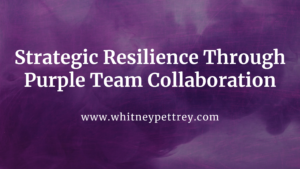In the clandestine corridors of cybersecurity, crisis communication is far more than damage control—it is an instrument of dominance, a calculated maneuver designed to seize the upper hand amid digital chaos. When the inevitable breach unfolds, the mission is not to appease but to assert complete control. This is an unseen battlefield where the only currency is trust, and the only way to secure it is through relentless composure, strategic ruthlessness, and an unbreakable command of the narrative.
Strategic Warfare: Seizing Control of the Crisis Narrative
Crisis communication within cybersecurity should never be misconstrued as a passive response—it is a tactical action, akin to deploying forces on an invisible battlefield. The very nature of communication during a crisis must be strategic warfare, designed to influence perceptions, guide internal operations, and project a consistent facade of command. This isn’t a matter of carefully worded statements; it is the exercise of raw power. The message must be calculated, deliberate, and delivered with unyielding precision. There is no space for ambiguity—control every silence, shape every word, and dominate the outcome.
Beyond Appearances: The Projection of Unyielding Authority
Leadership during a cyber crisis demands more than just the semblance of control—it calls for genuine authority. While theatrics may be appealing for those who are uninformed, the true art lies in projecting the kind of communication that commands respect. It means using every word to resonate with decisiveness and turning communication itself into an unmistakable act of strength. This involves conveying not only what needs to be said but also knowing precisely what must be concealed. The purpose is absolute: guide, shape, and command until the crisis bows to your influence.
Weaponizing Preparedness: Proactive Strategy as Dominance
Preparedness in cybersecurity is not merely an act of readiness; it is the weaponization of foresight. Effective leaders don’t prepare to react—they prepare to dominate. This means deploying preemptive measures that transform readiness into a proactive stance. Leaders must treat preparedness as a weapon—refining scenario plans, conducting rigorous simulations, and making readiness a source of leverage. This level of preparation is not about hoping for the best but being fully equipped to swiftly strike back when adversity hits, leaving no vulnerabilities for adversaries to exploit.
Calculated Transparency: The Art of Strategic Disclosure
Transparency in crisis management is neither a virtue nor an obligation—it is a decision shaped by tactical necessity. In the intricate landscape of cybersecurity, giving away too much information compromises defenses, while concealing too much invites scrutiny. Calculated transparency means deploying information as a tool—used sparingly and strategically to either calm, mislead, or dominate the narrative. Every piece of disclosed information must serve a strategic purpose. Transparency is not about putting a spotlight on the truth; it is about using that spotlight to control perception without ever relinquishing the advantage.
Evolving from Crisis: Transforming Weakness into Strength
The aftermath of a crisis is not simply a recovery—it is an opportunity to evolve beyond the weaknesses exposed. Post-crisis analysis must be as ruthless as the crisis response itself. It involves dissecting failures without sentimentality, identifying vulnerabilities, and transforming them into impenetrable strengths. True resilience is not about bouncing back; it is about re-emerging with the knowledge that you are stronger, harder to break, and better equipped for future challenges. Each failure provides the blueprint for a new level of fortification—ensuring you are not just prepared, but unassailable.
Case Studies: Dominance Through Controlled Chaos
Equifax: The Dangers of Hesitation
The 2017 Equifax data breach stands as a monument to the dangers of relinquishing control. A hesitant response allowed public mistrust to fester, and the company lost the narrative—a cardinal sin in the midst of a cyber crisis. Immediate, decisive communication would have asserted control. The opportunity to dominate the narrative was lost, not due to the breach itself, but to a failure of leadership—a failure to project authority from the outset and lead with clarity.
SolarWinds: A Masterclass in Tactical Transparency
In contrast, SolarWinds demonstrated the strength of calculated transparency during their 2020 breach. Their response, though not without flaws, was strategically executed—swift acknowledgment, continuous communication, and deliberate transparency enabled them to retain a measure of public trust. SolarWinds used transparency as a tactical tool—disclosing enough to prevent backlash but retaining control of the narrative. Their ability to project composure and calculated action during such a severe breach illustrated the power of disciplined crisis management.
Advanced Strategies for Elevated Crisis Communication
- Prepare Offensively, Not Defensively: Crisis preparedness should resemble an offensive military strategy, not a passive readiness drill. Rigorous scenario planning, assigning key roles, and rehearsing until responses become instinctual are crucial to command the outcome during a crisis.
- Master the Art of Strategic Disclosure: Transparency is not a sign of good faith; it is a tactical advantage. Disclose strategically, with the intent to control and dominate perception. Every piece of information must serve your strategy.
- Control All Channels, Control the Narrative: Dominance in crisis communication requires absolute consistency across all channels. Fragmented messaging invites speculation and weakness. Instead, every statement should reinforce a singular, powerful narrative—one that leaves no room for ambiguity.
- Adapt Ruthlessly: A crisis is a dynamic, shifting landscape. Your response must evolve in real-time—swiftly and without hesitation. Analytics are your weapon here—leverage them to monitor public sentiment, adapt messaging, and maintain command over the unfolding narrative.
Conclusion: The True Calculus of Cyber Dominance
“In preparing for battle I have always found that plans are useless, but planning is indispensable.” – Dwight D. Eisenhower
In the realm of cybersecurity, communication is the front line of control. It is about seizing and maintaining dominance, manipulating the crisis to reflect resilience and impenetrability. Crisis is not a storm to weather but an opportunity to showcase your power—to recalibrate, refortify, and emerge not just unscathed but stronger. Effective crisis communication is about owning the battlefield, commanding every aspect of the narrative, and reinforcing the organization’s position at every turn. This is the calculus of cyber dominance—to master chaos, bend it to your will, and emerge as the unchallenged victor.
Call to Action
For those who are ready to move beyond managing crises and instead, master them with an unwavering strategic advantage, visit whitneypettrey.com. Discover the methodologies that redefine crisis communication into an unparalleled tool of power, designed to position your organization as the dominant force within the digital battleground.
Let’s reshape resilience and control, one calculated and unflinching strategy at a time.


